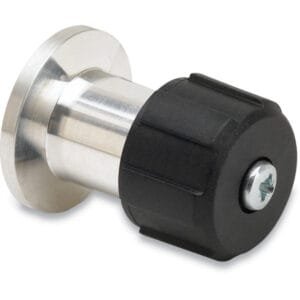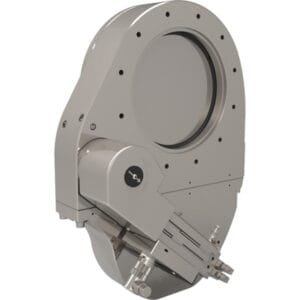KF (QF) to Quick-Connect Couplings: Streamlined Transitions for High-Vacuum Integration
The KF (QF) to Quick-Connect Couplings offered by TFM are designed to bridge the gap between KF flange systems and quick-connect tubing couplings, providing an efficient, leak-tight interface for vacuum instrumentation, fluid lines, and diagnostic tools. Constructed from high-purity 304 stainless steel, these adapters meet the demands of both high-vacuum performance and system modularity.
Each adapter features a standard KF (QF) flange on one end—available in KF16, KF25, or KF40 sizes—and a smooth outer diameter (O.D.) tube end designed to form a vacuum joint with compatible quick-connect couplings or compression seals. This enables fast connection to tubulated gauges, fluid lines, or other system components without the need for threading or welding.
Key Features of KF (QF) to Quick-Connect Couplings:
Universal Quick-Connect Compatibility
The smooth O.D. end fits most standard quick-connect couplings and elastomer-sealed fittings, creating a secure, vacuum-tight connection for flexible system design.KF Flange Interface
Supports easy integration with KF-based vacuum plumbing systems, using standard o-rings and centering rings for fast and reliable sealing.304 Stainless Steel Construction
Ensures durability, chemical resistance, and suitability for cleanroom and bakeable vacuum environments.Ideal for Instrumentation
Commonly used to connect ion gauges, thermocouple gauges, and other diagnostic sensors directly to high-vacuum lines.Available in Dual Coupling Configurations
For more complex needs, dual-coupling variants allow simultaneous fluid or gas circulation in closed-loop setups.
Applications:
Temporary or modular connection of vacuum gauges or sensors
Integration of fluid or purge lines into high-vacuum systems
Quick setup for R&D test benches, surface science tools, or pumped chambers
Facilitating coolant loops or reactive gas lines in process chambers
Retrofit solutions where threaded ports are unavailable or undesirable
TFM also supplies a full range of KF to hose adapters, KF to test ports, and KF to baseplate transition fittings, ensuring total connectivity across your vacuum infrastructure.
In summary, KF (QF) to Quick-Connect Couplings are your solution for rapid, tool-free transitions between vacuum flanges and smooth O.D. tubing. Whether you’re calibrating gauges or circulating process gases, these adapters deliver high performance with flexibility built in.




Reviews
There are no reviews yet.